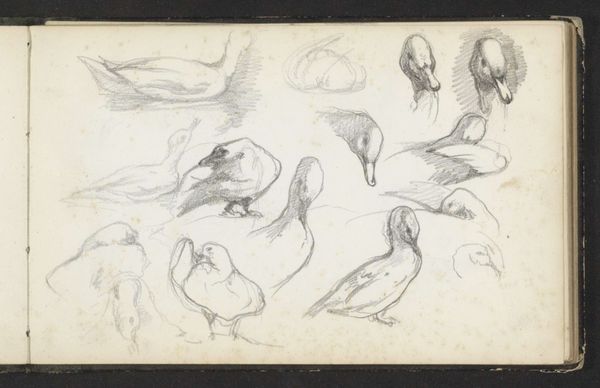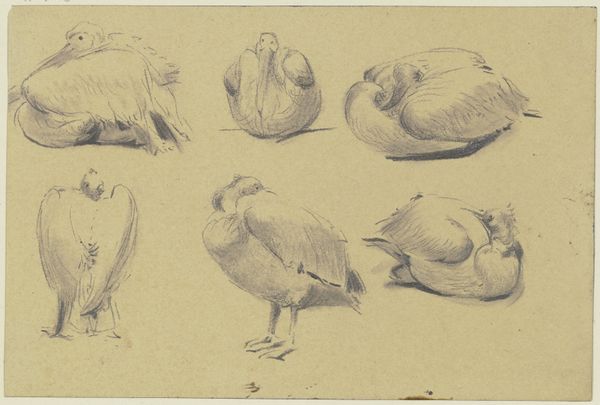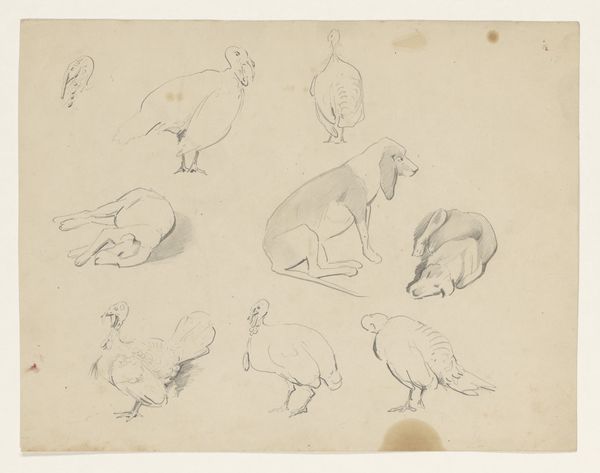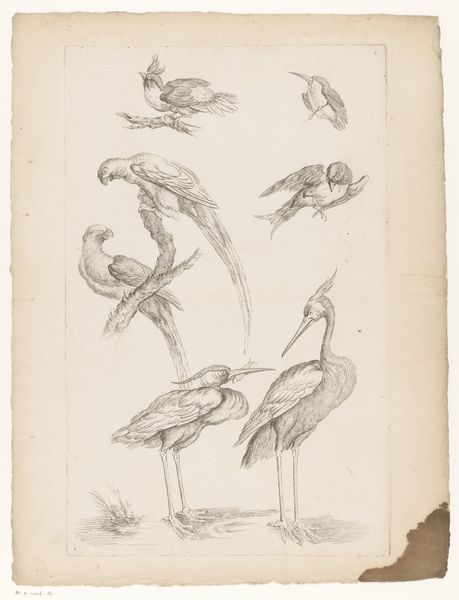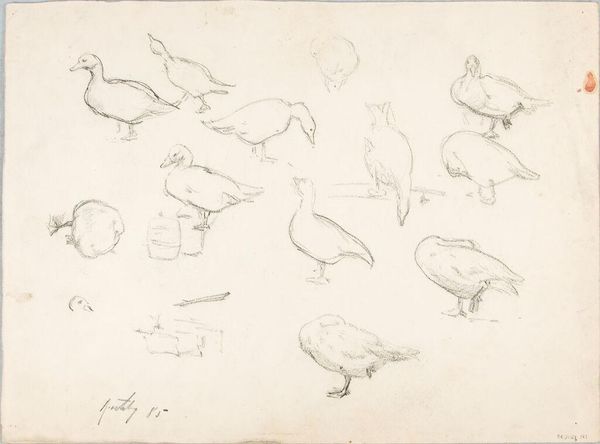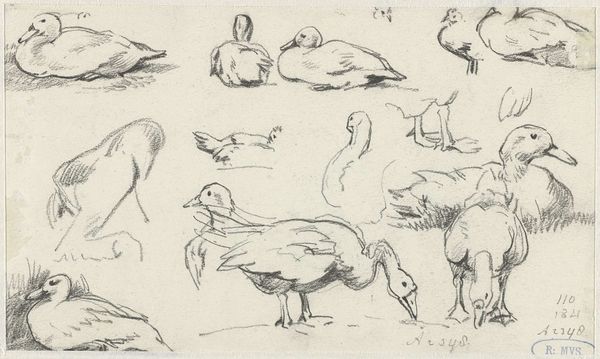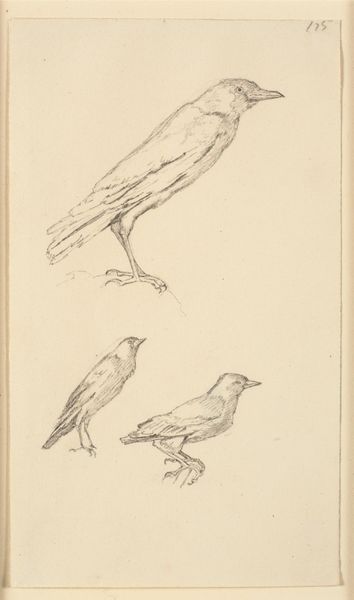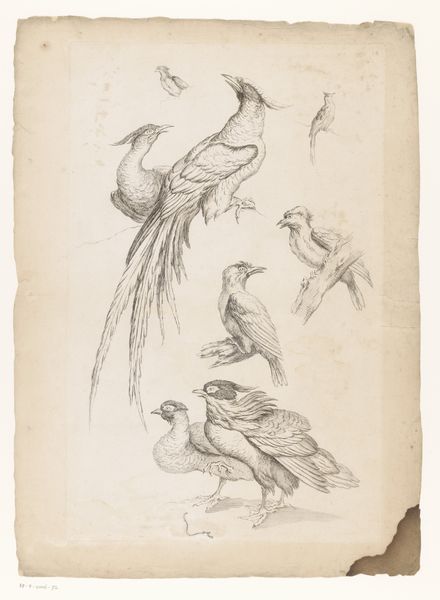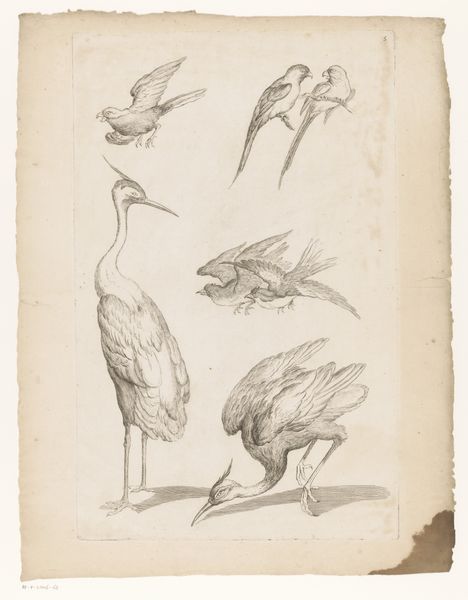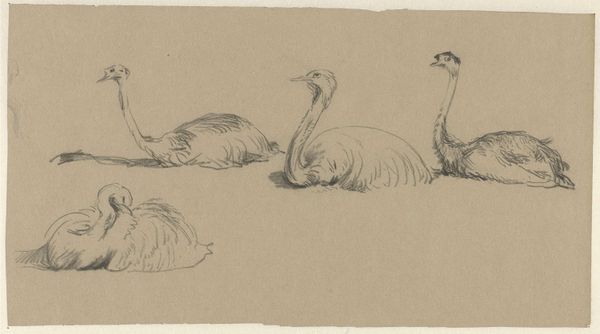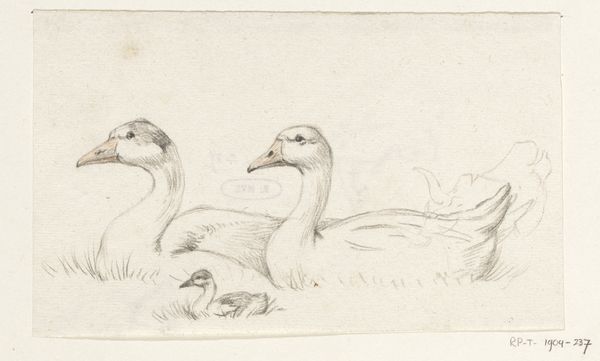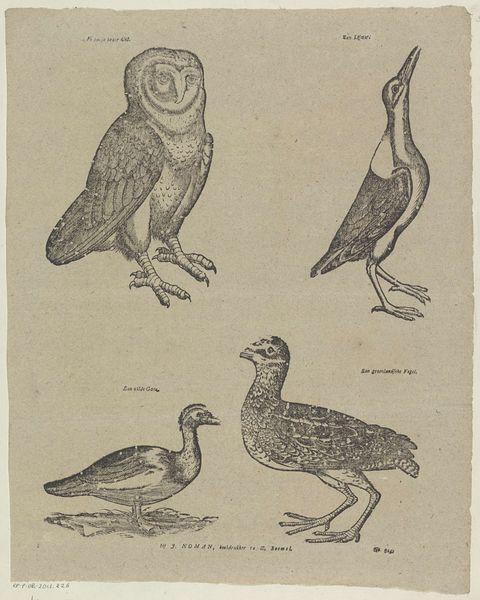
drawing, pencil, chalk
#
portrait
#
drawing
#
pencil sketch
#
landscape
#
folk-art
#
pencil
#
chalk
#
15_18th-century
#
academic-art
Copyright: Public Domain
Curator: Here we have "Studienblatt: Gänse, Störche und eine Katze" – that translates to "Study Sheet: Geese, Storks and a Cat". The artwork’s origin is unknown, it is exhibited at the Städel Museum, and the medium appears to be graphite pencil and chalk on paper. Editor: What strikes me is its immediate sense of lightness. The lines are so delicate, almost ephemeral, capturing a quiet stillness in these animal forms. There’s an elegance in the economy of line; the essence of each creature distilled to its most basic shape. Curator: Well, let's think about the context here. A study sheet such as this provided essential exercises for artists in earlier centuries. It wasn’t necessarily about the final piece, but understanding nature to better depict humanity. I imagine this sheet as crucial to understanding humanity’s relationship to animals and the domestic sphere within the timeframe. Editor: The composition too is fascinating. It’s not a unified scene but a collection of separate studies. It focuses the eye intensely on the formal qualities of each element - look how each stroke meticulously conveys shape and volume of the subject. Curator: Yes, and if you consider folk art themes and academic practices from the 15th-18th century period, then this simple "study sheet" gains greater context in gender roles and society. These drawings became accessible and provide understanding around social life that moves past the constraints of royalty. The fact that this simple study survived allows researchers a more profound dive into domesticity that centers folk art as a symbol of political commentary. Editor: Absolutely. The variations in line weight suggest a process of constant refinement. We witness the artist searching for the truest form, embracing and capturing reality, one pencil stroke at a time. And note that this exploration uses no color—it uses simple composition to provide different insights. Curator: I think these drawings are a lens into the social framework from which folk art stems. There is great potential here for continued conversation about the origins of domestic and labor dynamics within humanity. Editor: Agreed, examining these works allows for many conversations focusing on a minimalist capture of form, composition, and space. Curator: It offers insight and asks for us to dive into questions. Editor: A fine parting thought!
Comments
No comments
Be the first to comment and join the conversation on the ultimate creative platform.
